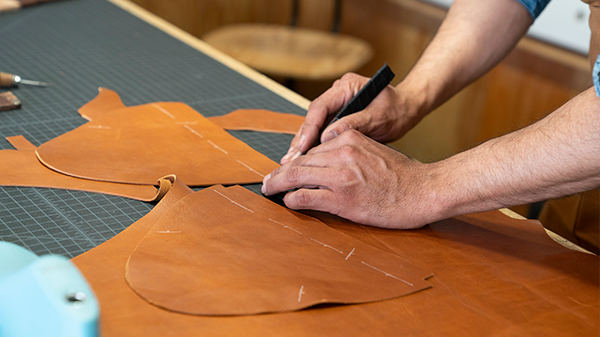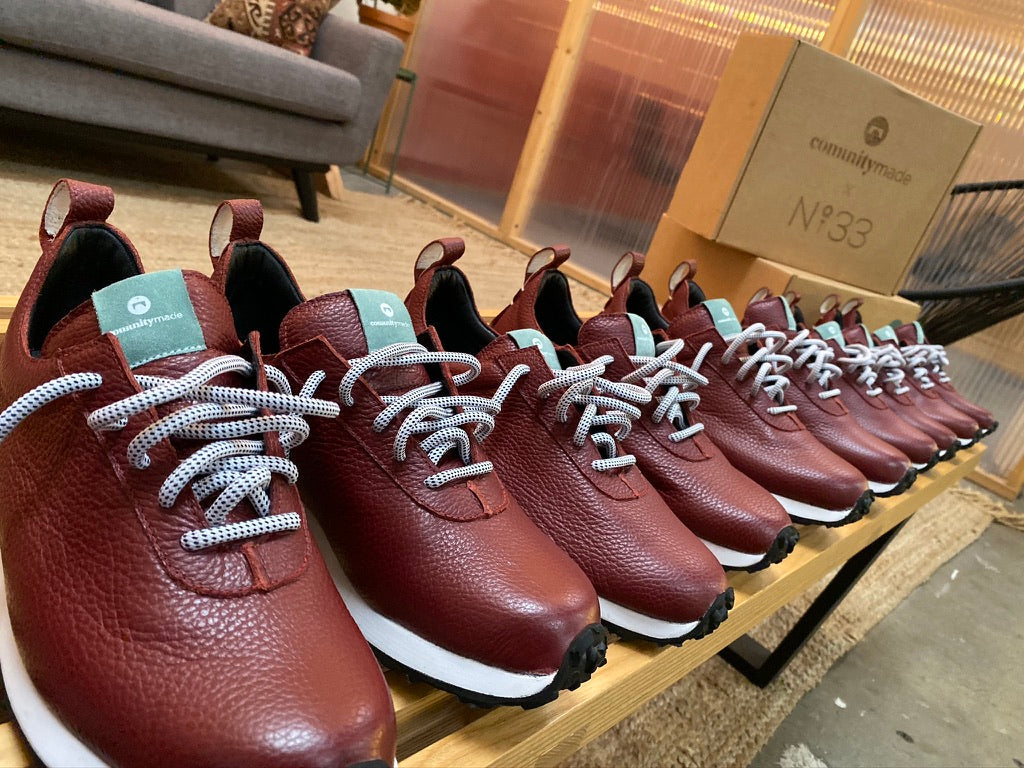
Well, it's that time of year again. Time to once again break out those sweaters, cardigans, jeans, and leggings. Though some of us may miss those long, hot sunny days of summer, one of the many things to look forward to in the upcoming season are shoes! Perhaps one of the best times of the year to buy a new pair of shoes is when the weather changes from hot to cold, and of course, cold to hot. For now, though, we are all just looking forward to the upcoming times that the fall and winter seasons are to bring. So, if you are like me and enjoy buying a new pair of shoes at the turn of every season, then here are some of the best materials to look out for when making your next shoe purchase!
Leather

Perhaps the most popular luxury material used for the crafting of shoes is leather. There are many reasons why artisans and manufacturers chose to design their shoes in leather. Not only does leather give that high-end, sleek feel, but it is also very sturdy and durable, especially when taken care of properly. Leather also has an elastic quality to it that allows it to conform to your feet over time while also helping to regulate temperature as it is a breathable material. There are some considerations, however, when it comes to using leather for shoes. For instance, it may be more expensive than other materials and it might weigh more than other types of shoes. If you do decide to purchase a new pair of leather shoes, make sure to follow manufacturers instructions on how to care for them. Here are some general tips to help care for your leather shoes.
- Purchase a leather shoe cleaning kit
- Use a leather conditioner
- Store in a dry, dark place
- Stuff newspaper in the shoes while not wearing them, this will help wick away any moisture that may be locked inside which can damage the leather material
- Purchase a shoe rack
Textiles

Another common material that shoes are made out of is textiles. Textiles is a broad term that covers material made by weaving an interlocken network of yarns or threads. The use of textiles for shoes first became popular during the Napoleonic Era where fabrics were used for the shoes of the elite. However, it wasn’t until the Industrial Era with the creation of factory lines and machines where shoes made from textiles became affordable and widely available to the general public. Like leather, textile shoes come in many different colors, styles, and variations. Depending on the nature of the textile, they may deteriorate quickly or can retain odors but with some care, they can be worn for a substantial amount of time. Some of the most common textiles used in the creation of shoes include;
- Cotton- comfortable, lightweight, and easy to clean
- Polyester- flexible, dries out quickly, and is resistant to shrinking
- Wool- helps keep feet warm in the winter and cool in the summer
- Nylon- durable, insulated, and cheap
- Rayon- soft, comfortable, easy to color
- Propylene- able to withstand pressure and resist chemicals
- Lycra- elastic, able to stretch, and strong
Synthetics

Another group of materials commonly found in shoes are synthetics. Synthetics are essentially fibers made by humans through chemical synthesis. There are many synthetic fibers but there are a few that are most often used in the crafting of shoes. For this process, the synthetic material makes up the external surface that is adhered to a polyester fabric. The following fabrics are great for those who want to support vegan shoes;
- Polyurethane-coated fabrics (PUCFs)- These are materials made to construct the upper part of the shoe that contain a cotton or polyester/cotton base with a thin coating of polyurethane on the top, which coats the entire piece of fabric. Polyurethane-coated fabrics are great for the imitation of leather and are also soft, light-weight, and comfortable to wear.
- Polyvinyl-chloride-coated fabrics (PVC)- This type of material is a part of the upper construction of shoes that is most often made on a woven base that is then sprayed with a layer of plasticised PVC, which may have a solid or cellular structure. The benefit of these fabrics is that they are easy to clean, resistant to water, and less expensive, though they are reported to become misshapen over time and may be less comfortable on foot.
- Poromeric coated fabrics- Another synthetic material that is often used for the construction of the upper part of a shoe is poromeric coated fabrics. Poromeric is a name given to synthetic material that possesses leather-like qualities and appearance. These fabrics are usually formed on a textile or polymer base with a thick and porous polyurethane surface layer. These materials are often water repellent and very easy to clean.
Plastic

Believe it or not, but shoes are also commonly made out of plastic! Though some have argued against the use of plastic in shoes because of their potential for waste, some companies are actually beginning to recycle old thrown out plastic into woven fibers used for the creation of shoes. Polyester and plastic bottles are commonly made out of the same substance, polyethylene terephthalate. After going through a purification and cleaning process, clear bottles are shredded to form the fiber needed to create the shoes. Eventually, the fibers will go through a dying process which is why the clear bottles are most often used for the manufacturing of shoes. Due to the nature of plastic, shoes made from this material tend to be less breathable on foot.
Of course, these are just a few of the most popular materials that shoes are made out of today. If you are like many others who simply can not go without the luxury, style, and comfortability that only owning a great new pair of leather shoes can bring, then look no further than COMUNITYMade. We offer only the finest quality imported Italian leather and the highest skilled artisans to handcraft each and every pair of shoes that we sell. We also offer a vegan option made from Field Corn that offers the luxurious look of leather. So, if a pair of hand crafted, quality sourced, and personalized shoes sounds like the thing for you, visit our online store or make an appointment with one of our artisans today!






A variety of textile products have also been subject to tariffs as a result of the ongoing trade Textile & Leather Products Manufacturers conflict between the United States and China, increasing their cost to American customers.